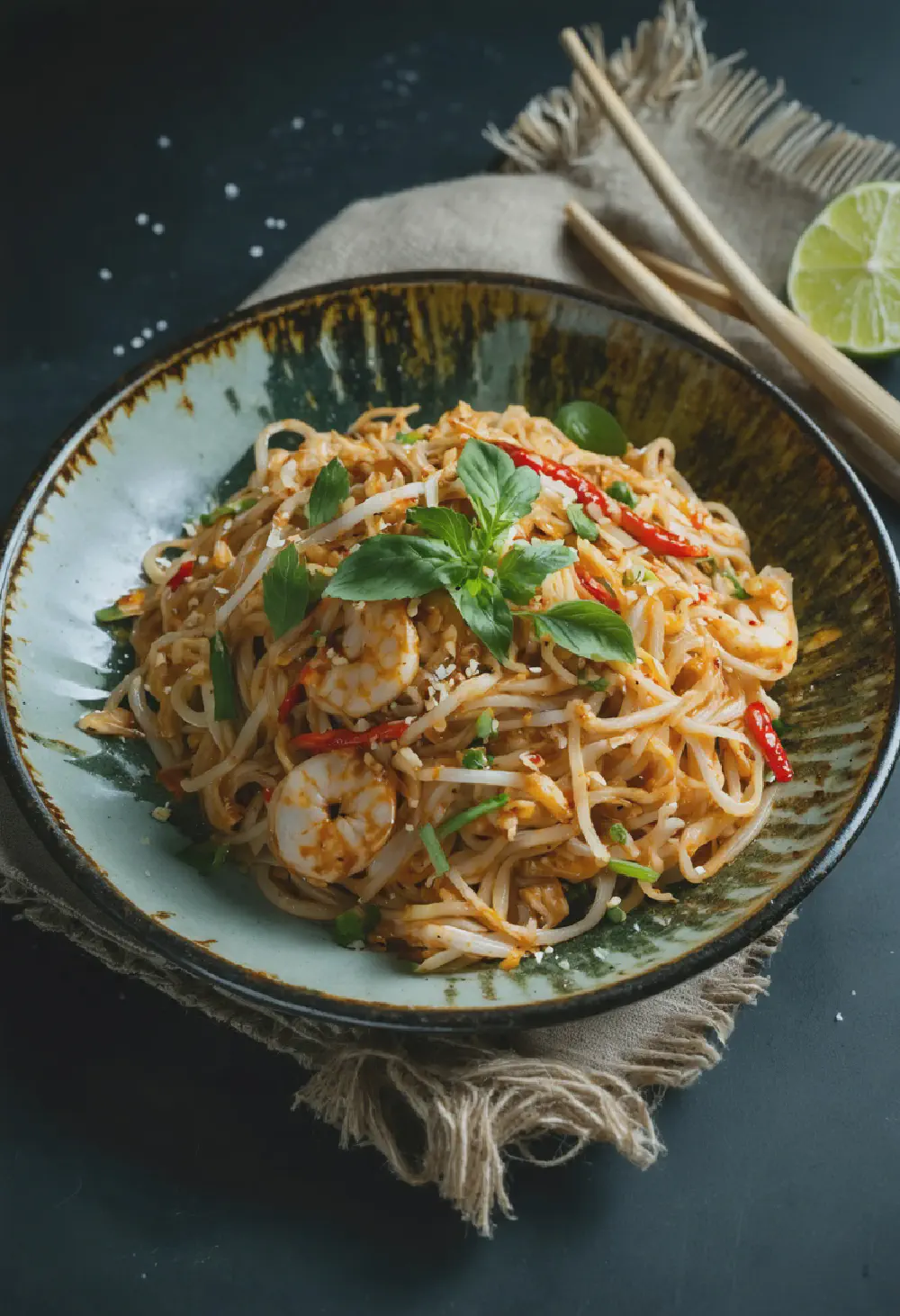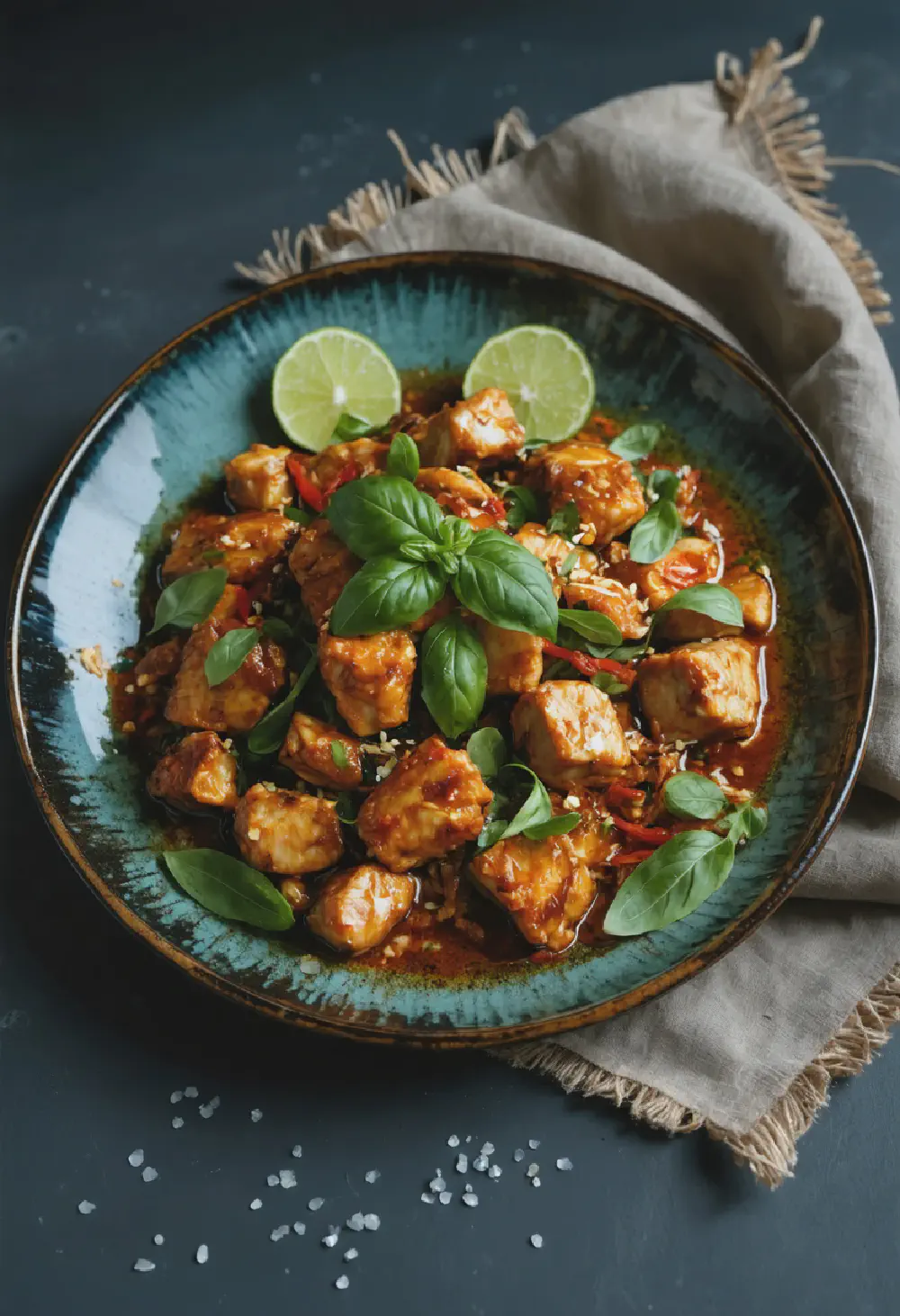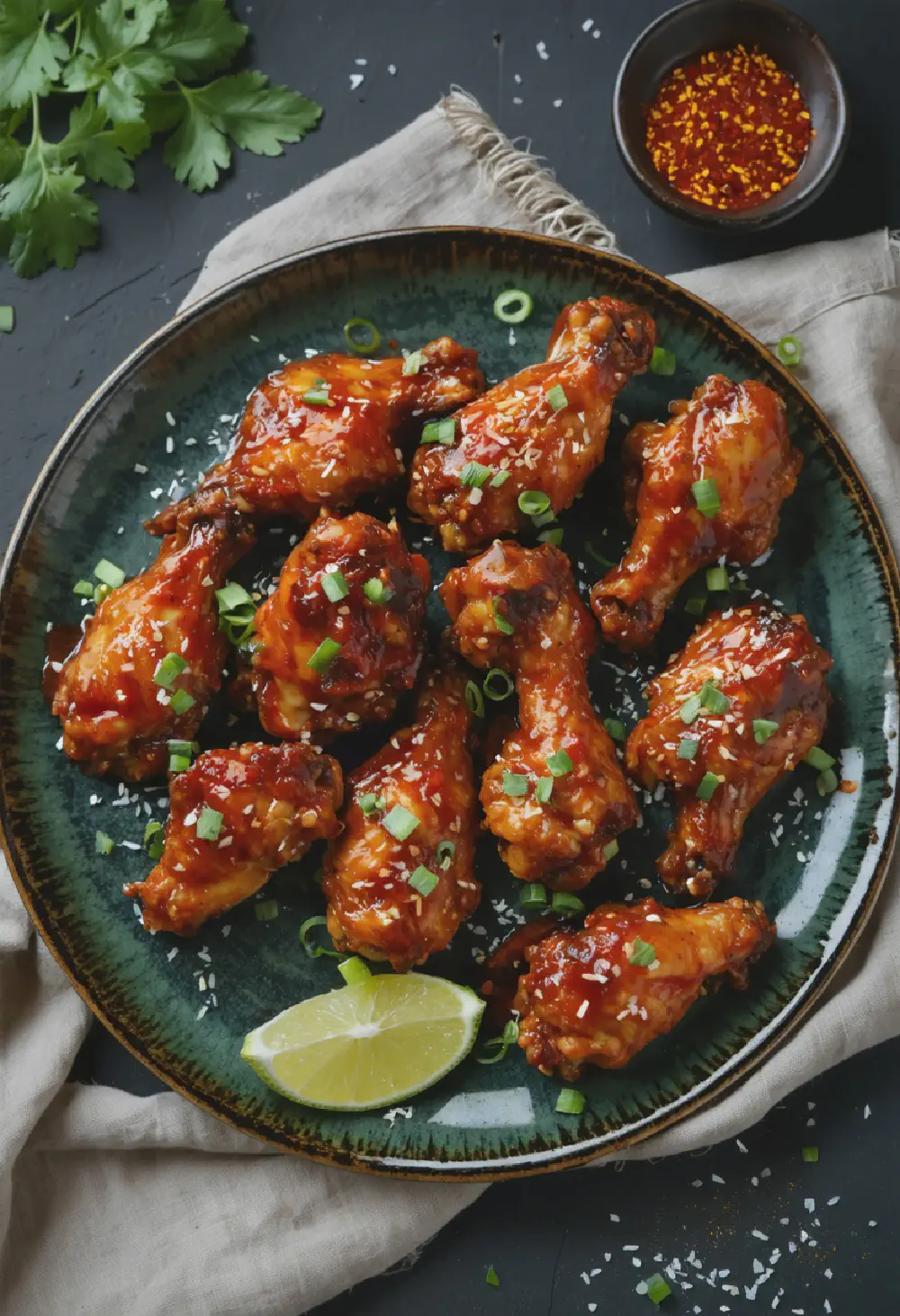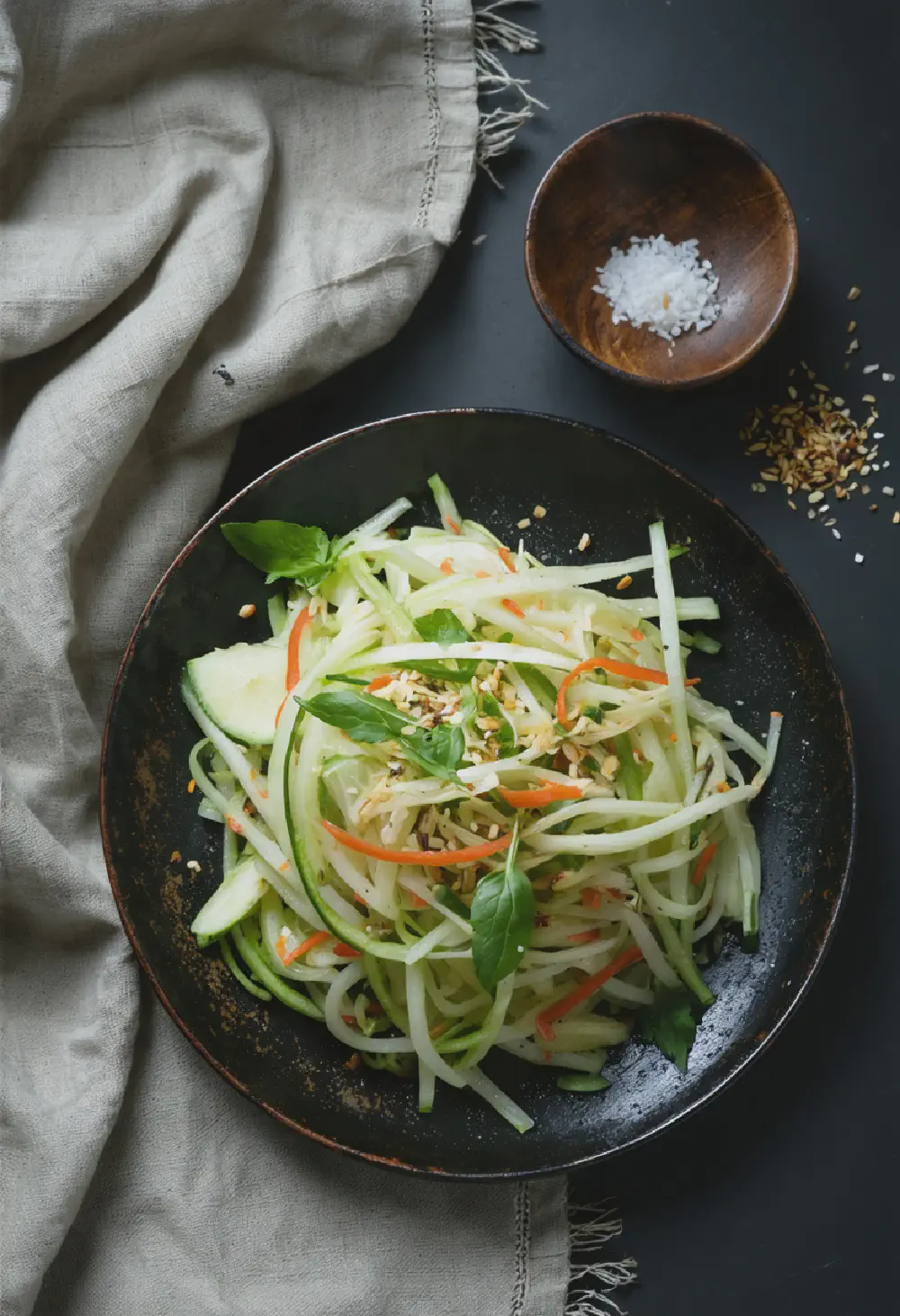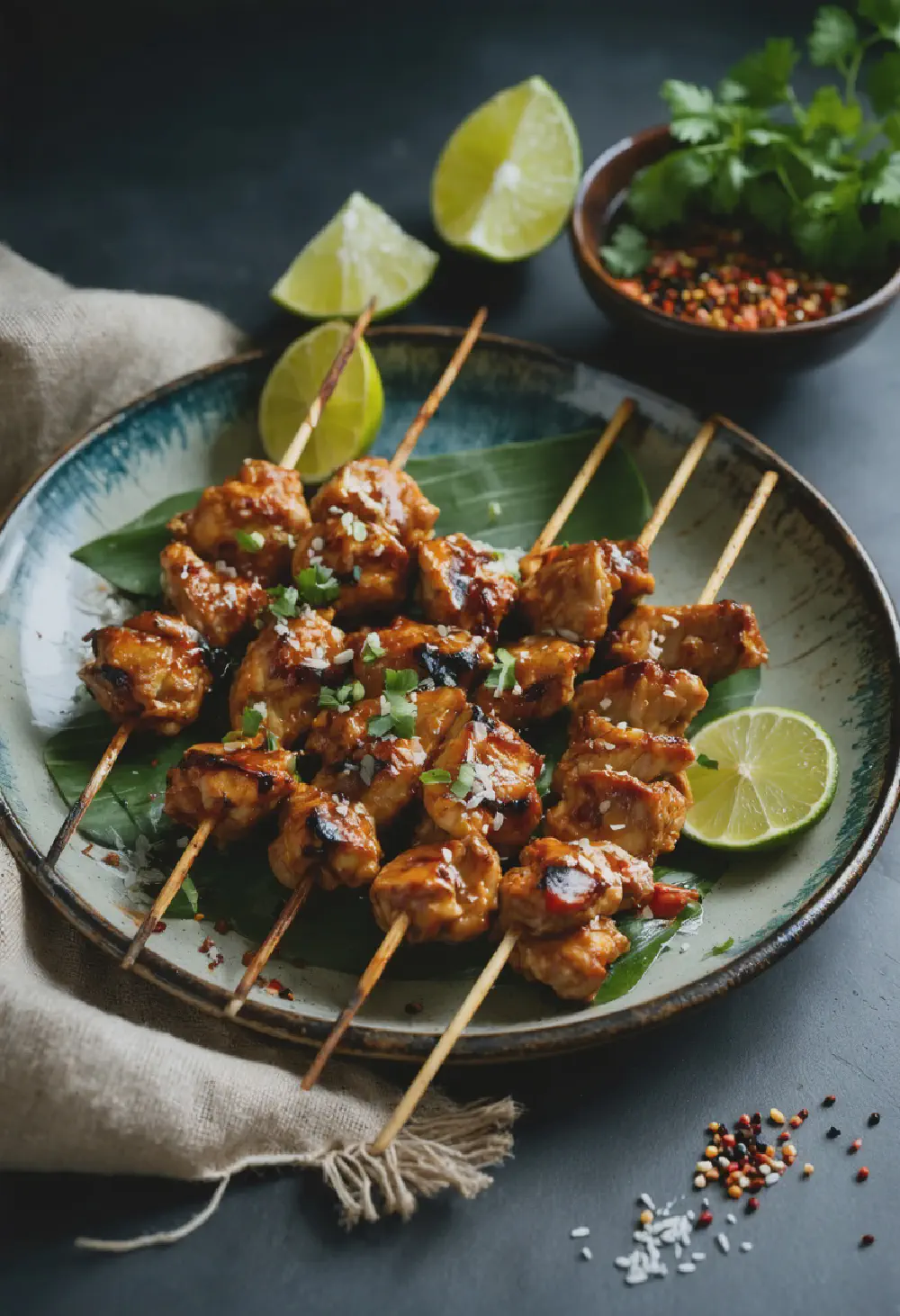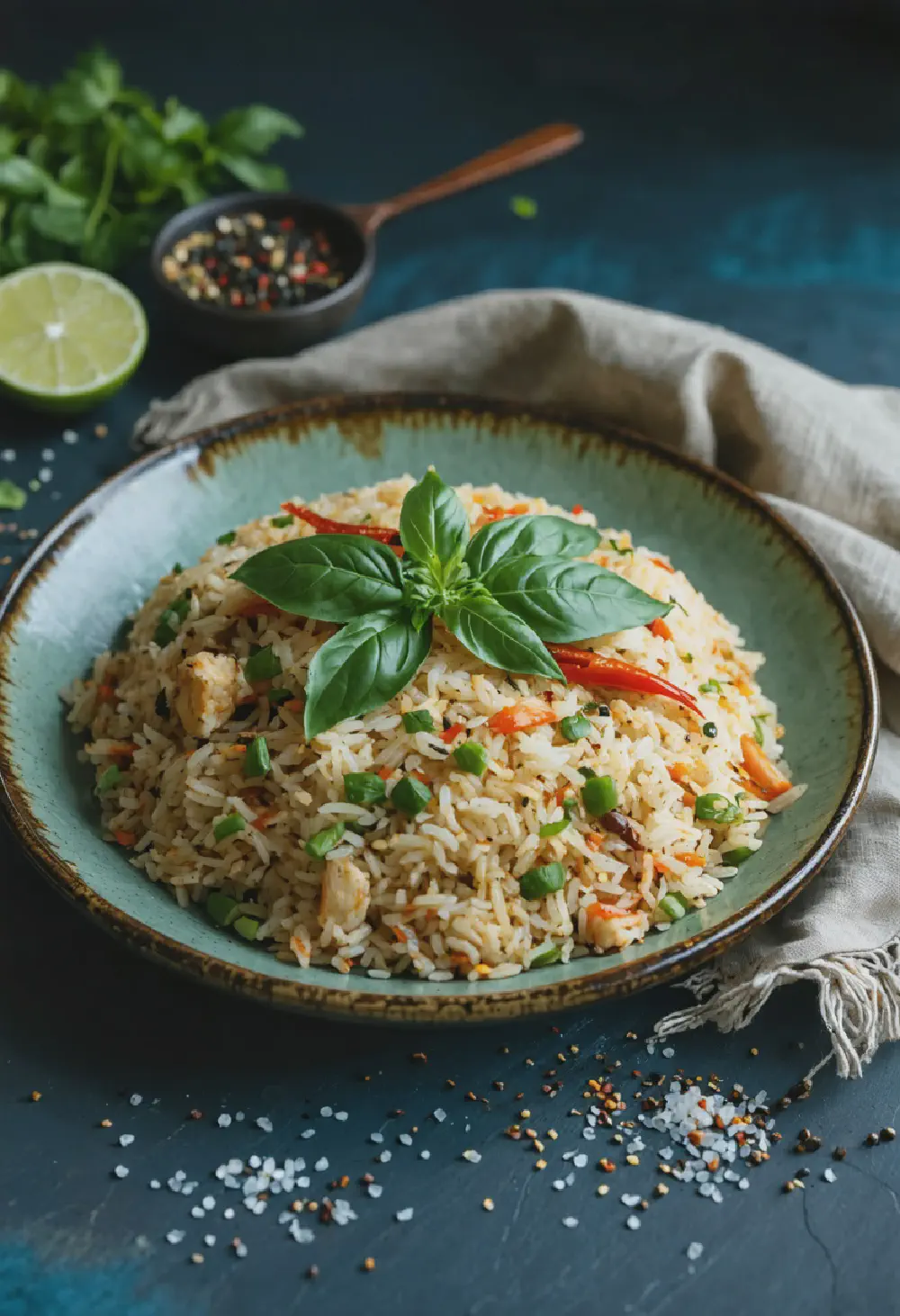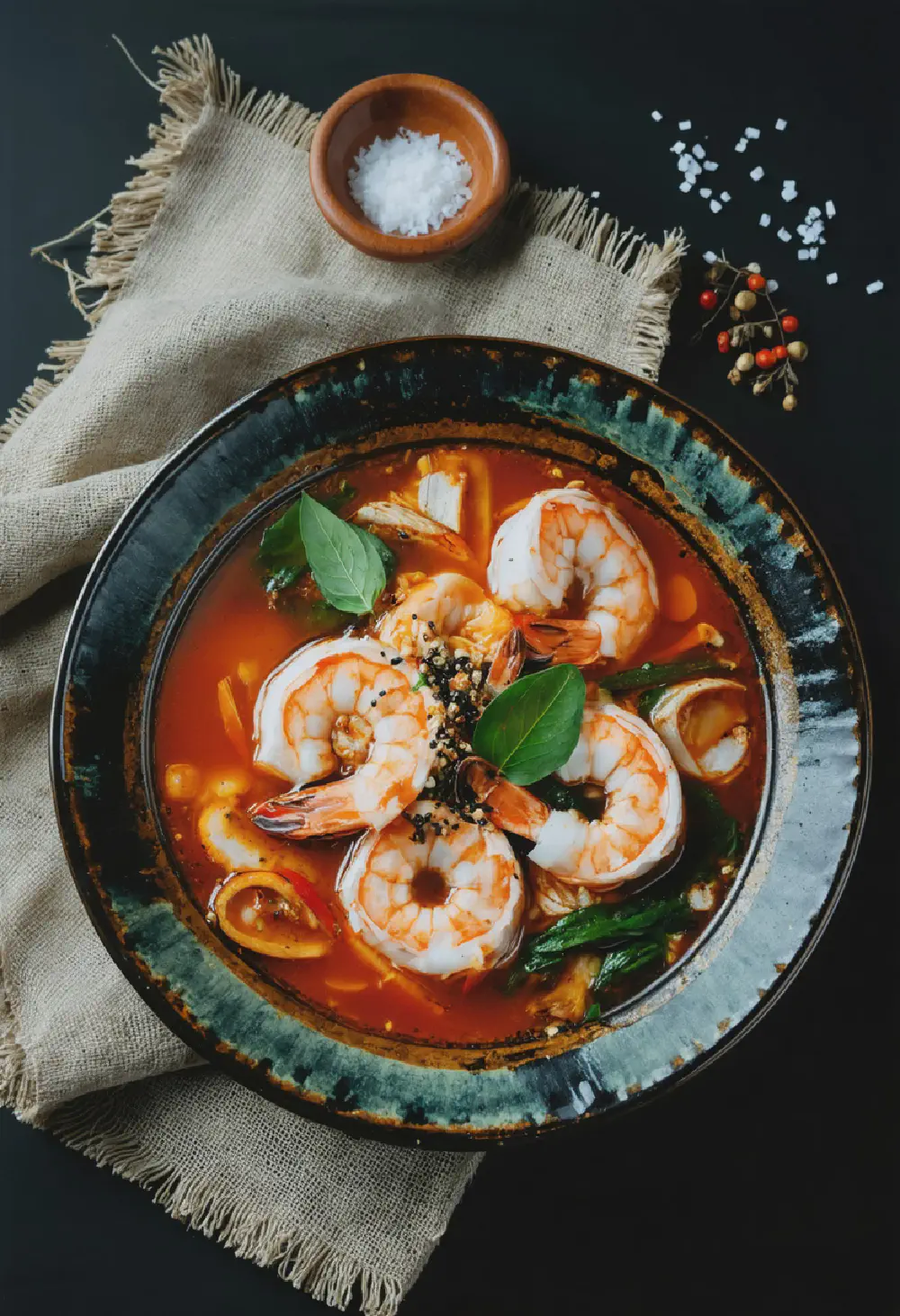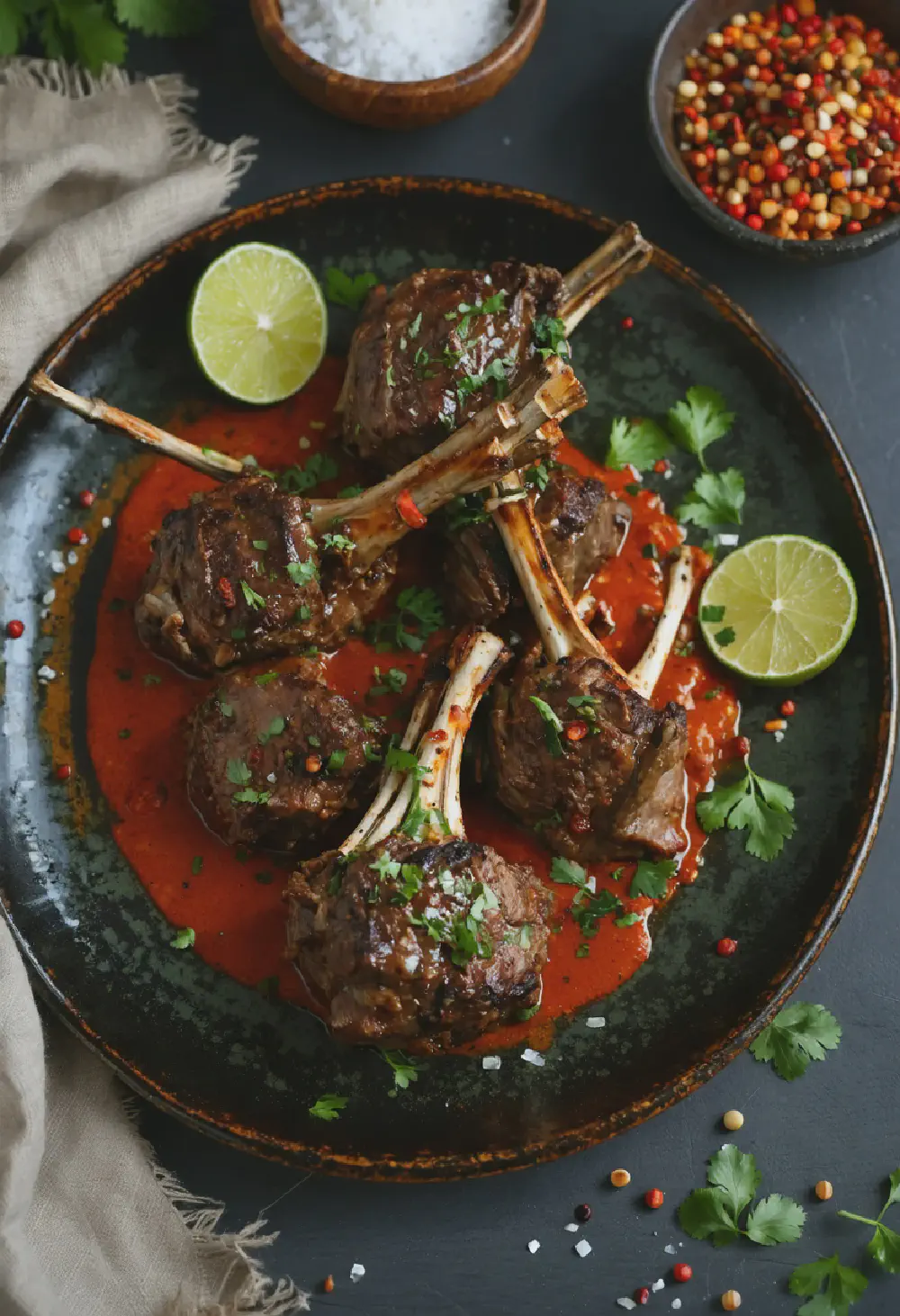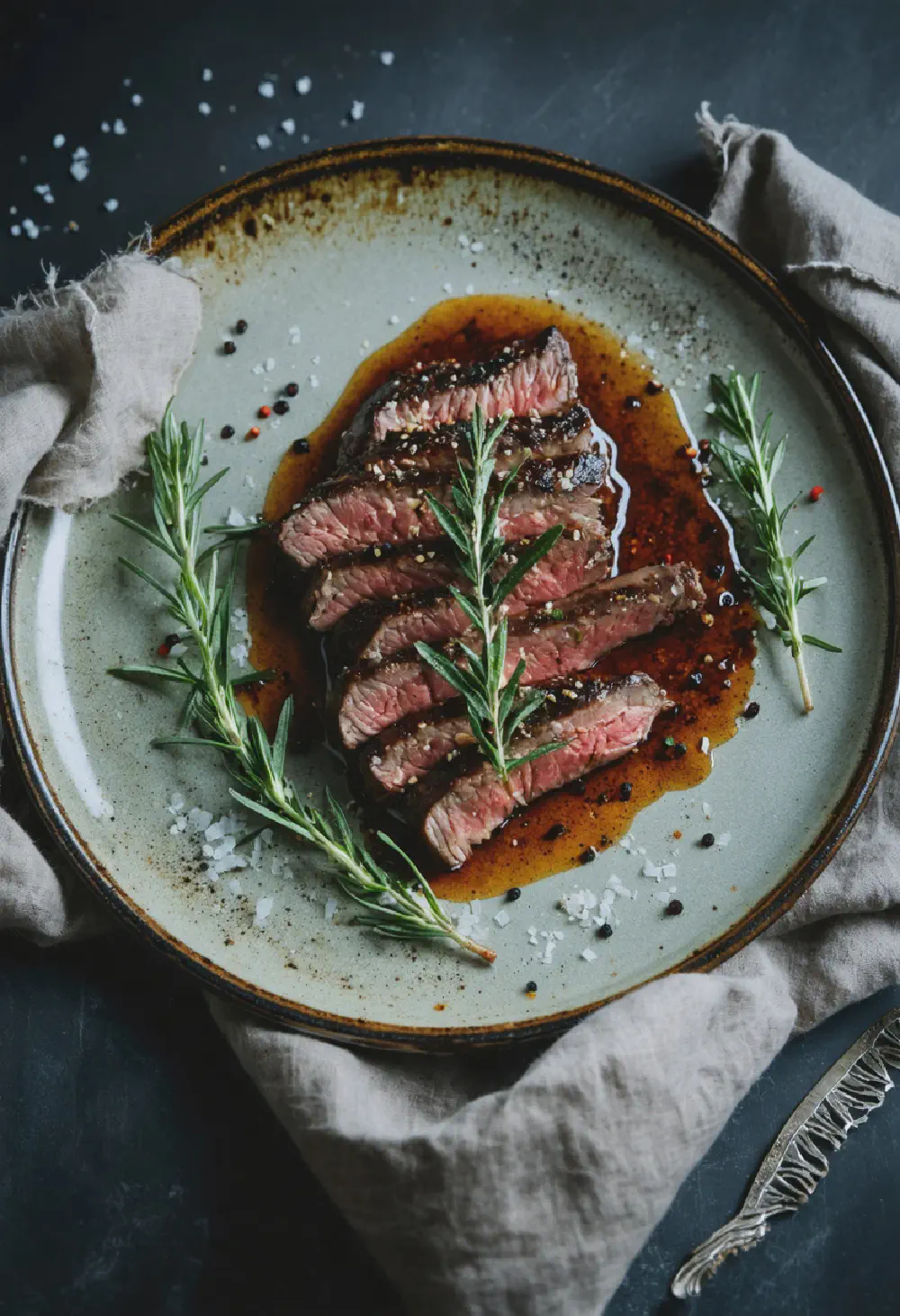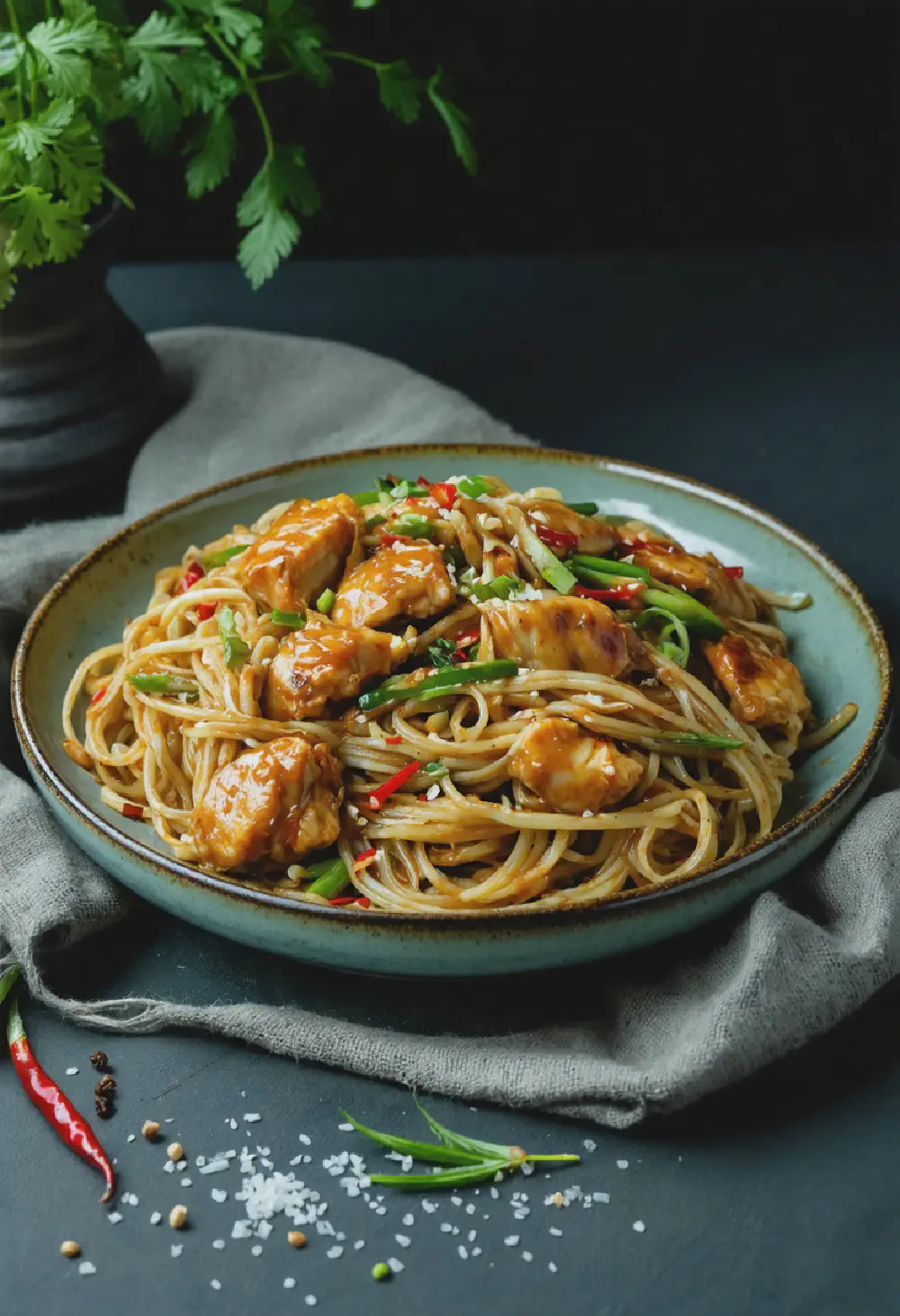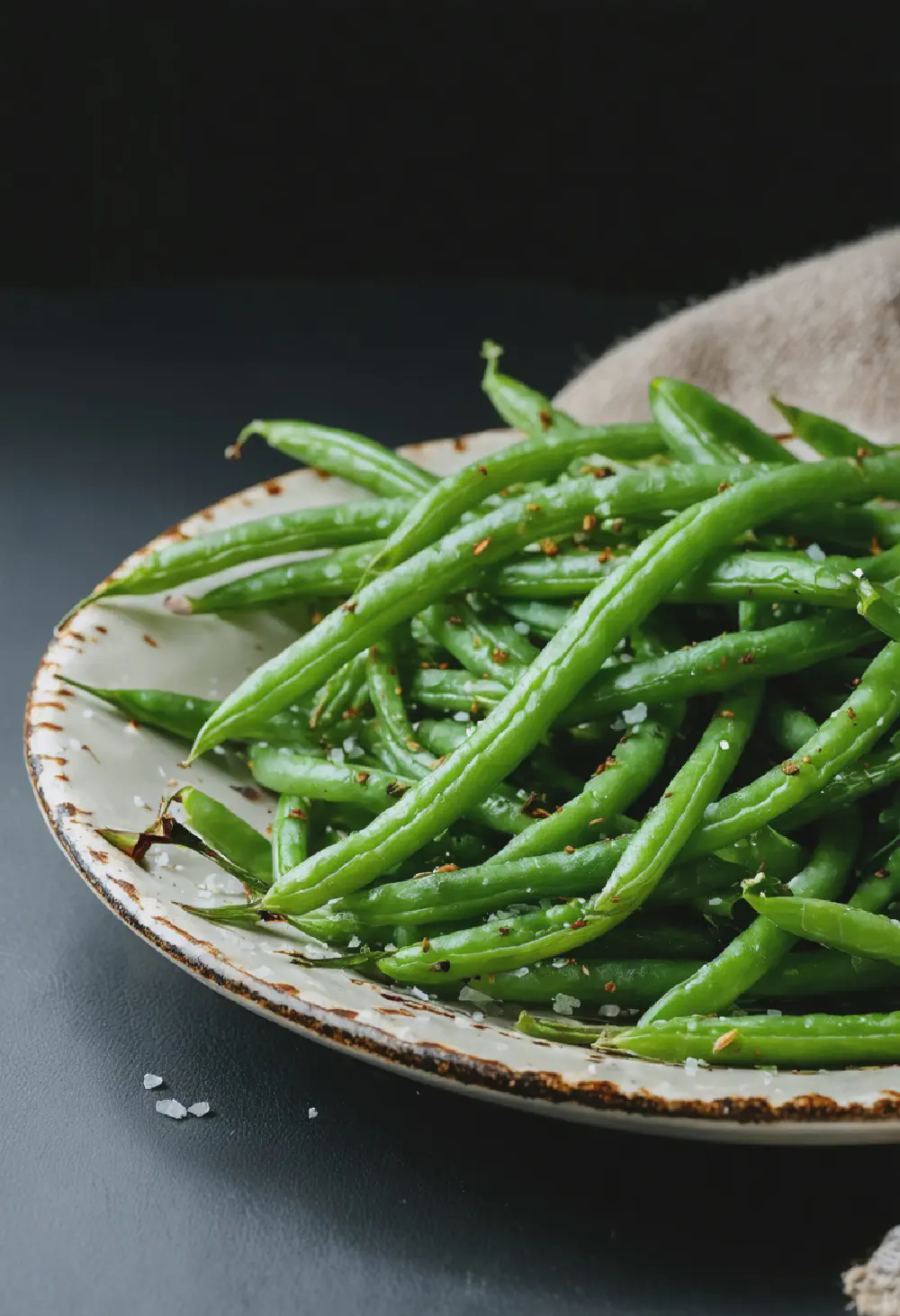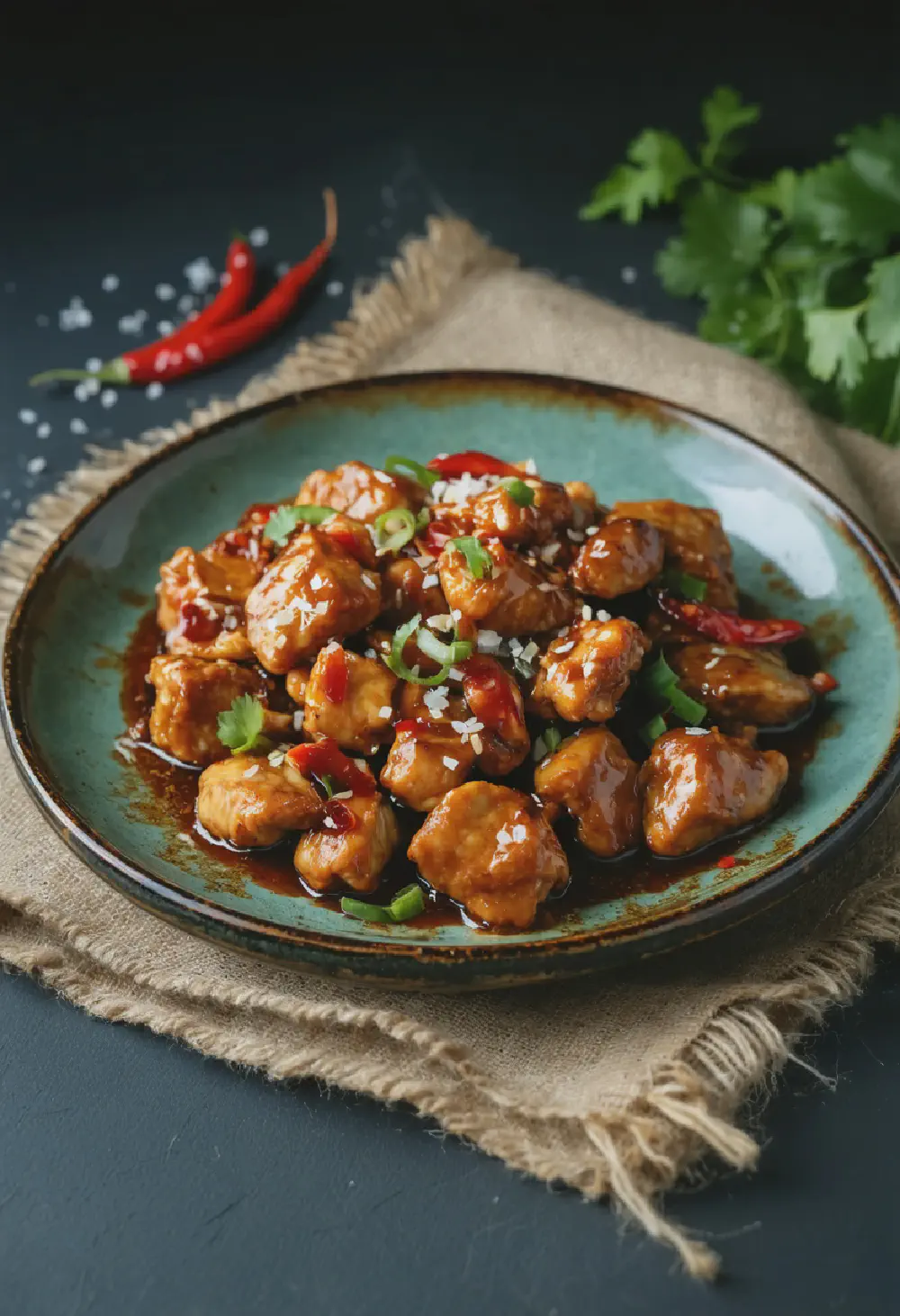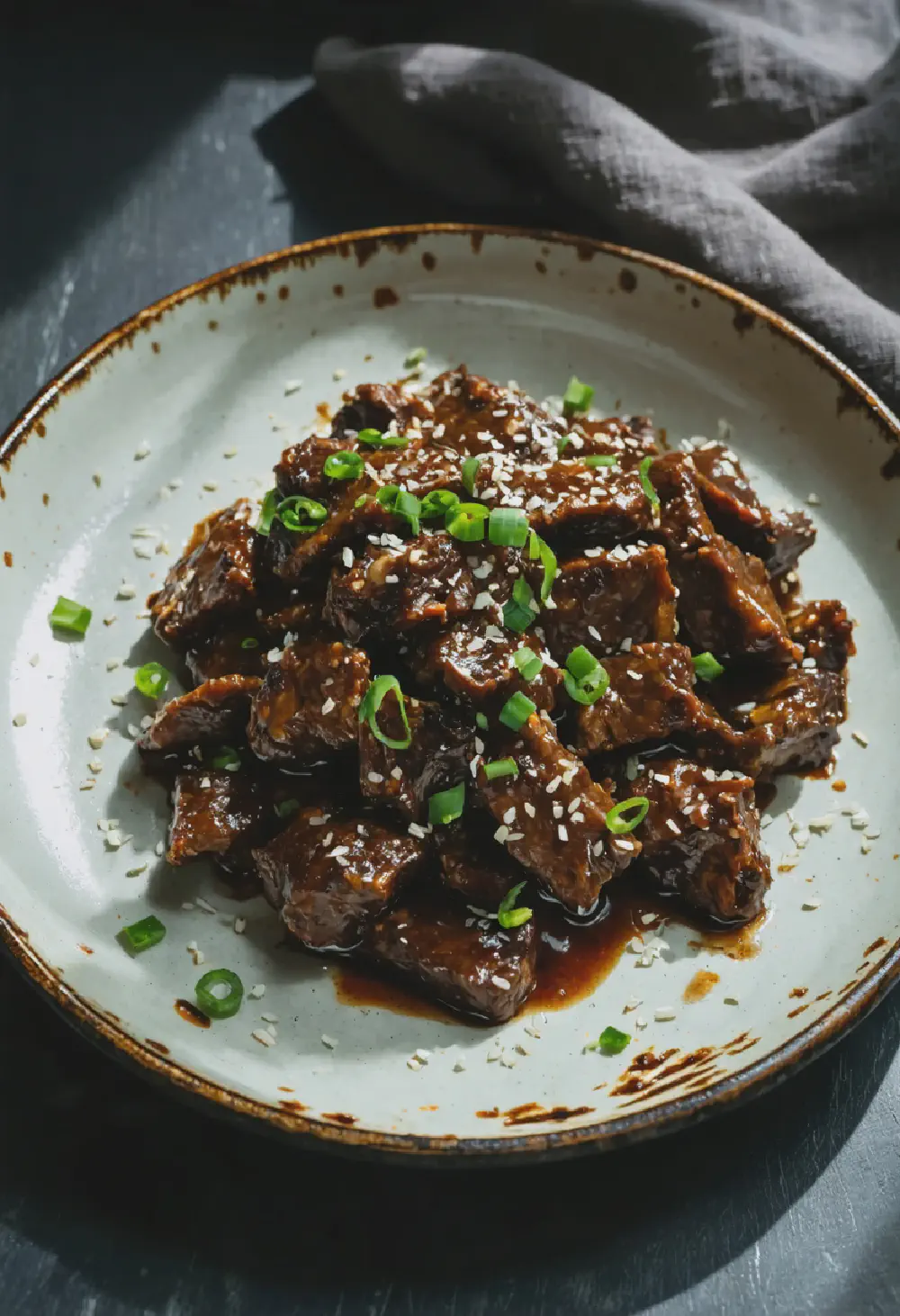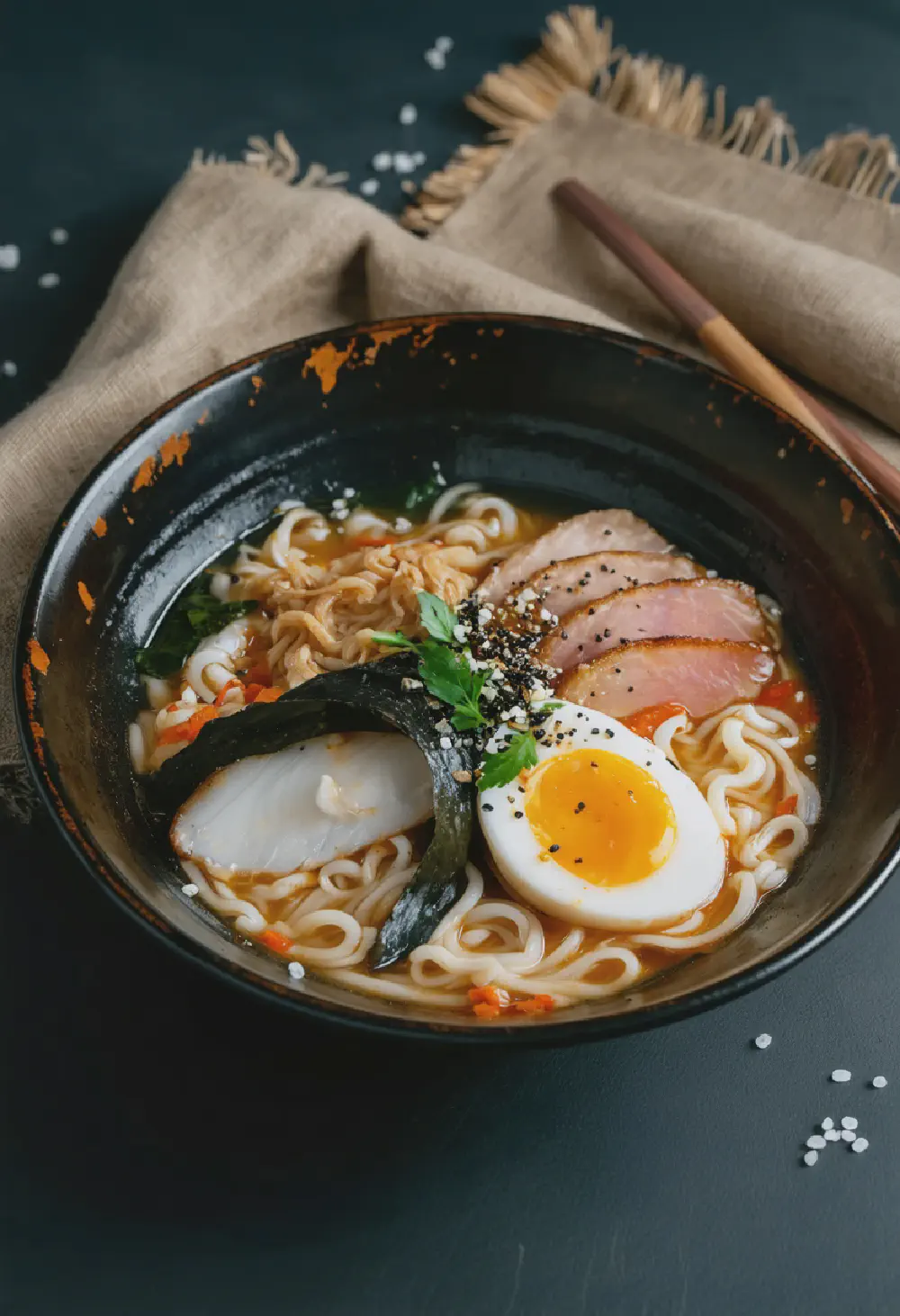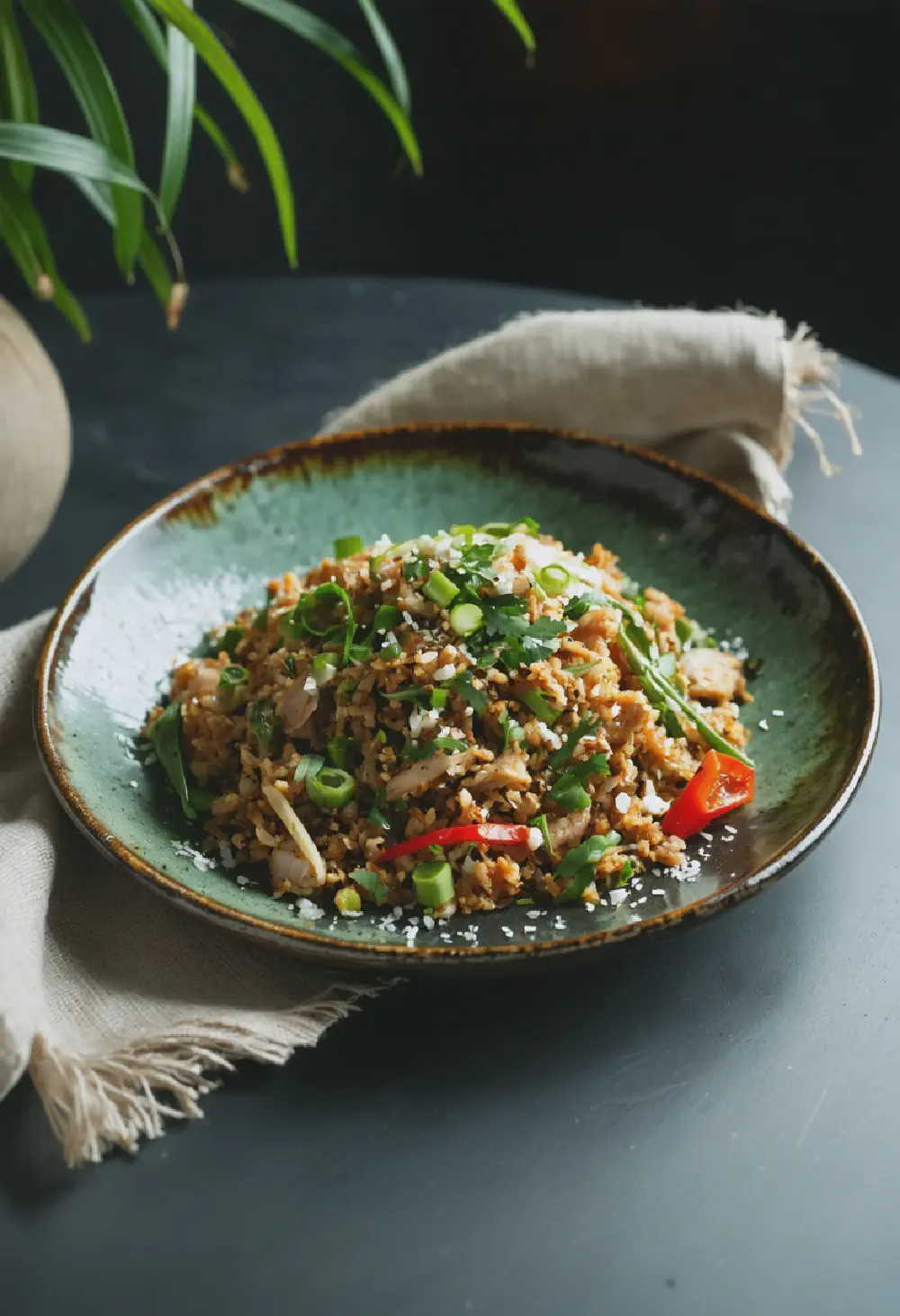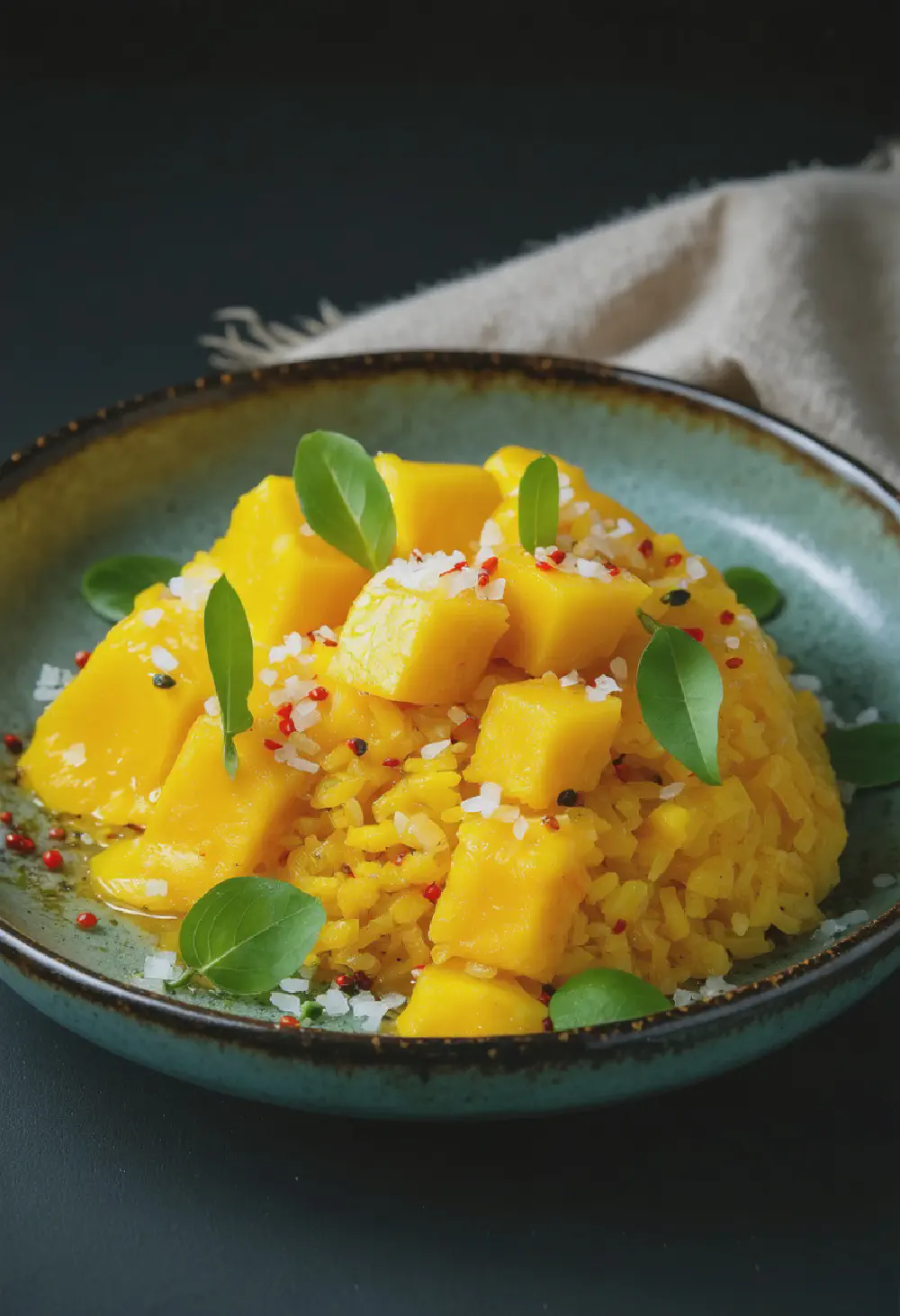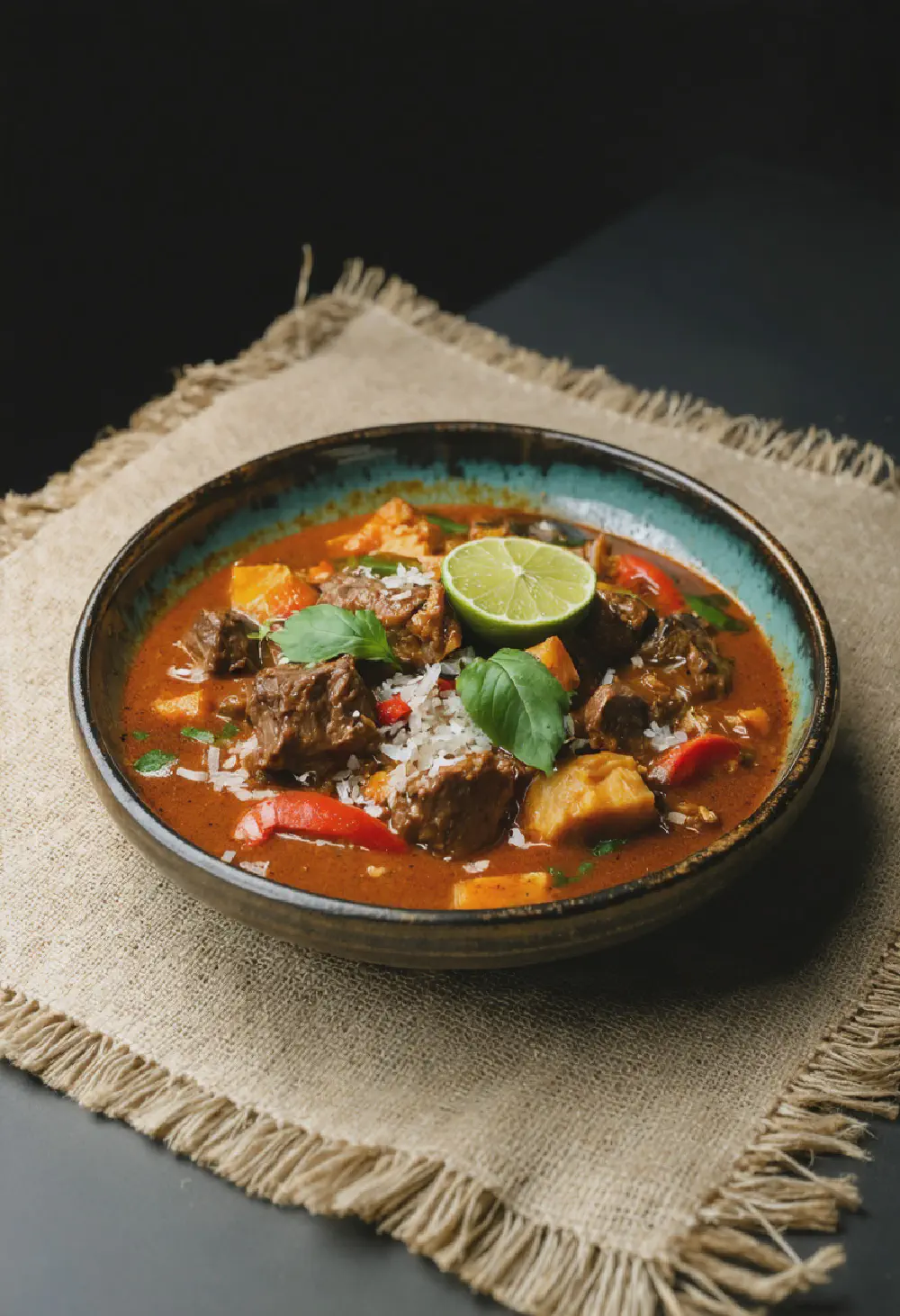Authentic Pad Thai
20M
35M
- Makes 4 servings
- 8 oz dried rice noodles
- 3 tablespoons vegetable oil
- 3 cloves garlic, minced
- 4 oz boneless chicken breast, thinly sliced
- 4 oz shrimp, peeled and deveined
- 2 eggs, lightly beaten
- 1 cup bean sprouts
- 1/4 cup chopped scallions
- 1/4 cup chopped roasted peanuts
- 2 tablespoons fish sauce
- 2 tablespoons tamarind paste
- 2 tablespoons palm sugar or brown sugar
- 1 tablespoon rice vinegar
- 1/2 teaspoon chili powder (optional)
- Lime wedges, for serving
- Fresh cilantro, for garnish
- Soak the rice noodles in warm water for about 20 minutes, or until they are soft but still firm. Drain and set aside.
- In a small bowl, mix together the fish sauce, tamarind paste, palm sugar, rice vinegar, and chili powder to make the sauce. Set aside.
- Heat the vegetable oil in a large wok or skillet over medium-high heat. Add the garlic and stir-fry for about 30 seconds until fragrant.
- Add the chicken and shrimp to the wok, and stir-fry until they are cooked through, about 2-3 minutes.
- Push the chicken and shrimp to one side of the wok, and pour the beaten eggs into the other side. Scramble the eggs until they are just set, then mix them with the chicken and shrimp.
- Add the soaked noodles to the wok, and pour the sauce over them. Toss everything together to coat the noodles evenly with the sauce.
- Stir in the bean sprouts and scallions, and continue to stir-fry for another 2-3 minutes until the noodles are cooked through and the bean sprouts are slightly wilted.
- Remove the wok from the heat, and transfer the Pad Thai to serving plates. Garnish with chopped peanuts, lime wedges, and fresh cilantro.
Authentic Pad Thai: A Journey Through Taste and Tradition
History
The origins of Authentic Pad Thai trace back to the 1930s in Thailand, a time when the country was known as Siam. The dish was part of a national campaign to define Thai cuisine and reduce rice consumption during World War II. The then-Prime Minister, Plaek Phibunsongkhram, promoted Pad Thai as a way to unite the nation under a common culinary identity. This stir-fried noodle dish, which incorporates local ingredients like tamarind, fish sauce, and peanuts, quickly became a staple in Thai households and street food stalls. Today, Authentic Pad Thai is celebrated worldwide, embodying the rich history and culinary innovation of Thai cuisine.
Taste Profile
Authentic Pad Thai is renowned for its harmonious blend of flavors and textures. The dish strikes a perfect balance between sweet, sour, and savory notes. The sweetness comes from palm sugar or tamarind paste, while the sourness is achieved through the use of lime juice or vinegar. Fish sauce adds the savory umami flavor that is quintessential to Thai cuisine. The texture is equally important, with the soft rice noodles contrasting against the crunch of bean sprouts and peanuts. This delightful mix of flavors and textures makes Authentic Pad Thai a beloved dish that tantalizes the taste buds and leaves you craving more.
Cultural Significance
Within Thai cuisine, Authentic Pad Thai holds a special place as a symbol of national pride and culinary heritage. It is not just a meal but a representation of Thailand’s ability to blend diverse influences into a unique and beloved dish. Often enjoyed at street food stalls, Pad Thai brings people together, fostering a sense of community and shared experience. It is commonly served during festivals and celebrations, highlighting its role in Thai culture. The dish’s adaptability and widespread popularity have made it a global ambassador for Thai cuisine, showcasing the country’s rich culinary traditions and innovative spirit.
By exploring the history, taste profile, and cultural significance of Authentic Pad Thai, you gain a deeper appreciation for this iconic dish and its place within Thai cuisine. Whether you’re a seasoned chef or a curious foodie, the allure of Authentic Pad Thai is undeniable, inviting you to experience the flavors of Thailand right in your own kitchen.
